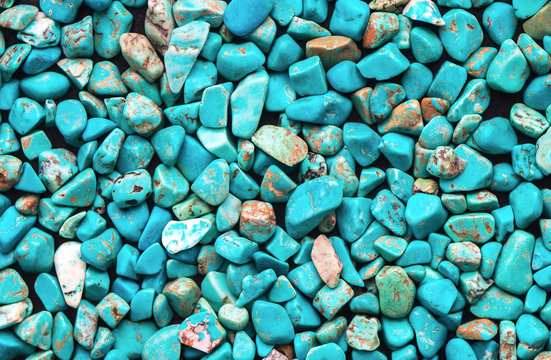
The beautiful ocean like coloring of Turquoise has made it a much-coveted stone throughout the world, and throughout the ages. The most common specimens of Turquoise are a beautiful blue-green color, reminiscent of tropical ocean water, and often contain grey, black, or brown veining.
The name of Turquoise comes from the French word turquois meaning Turkish, as Turquoise was first introduced to Europe with the expansion of the Ottoman empire.
Turquoise has enjoyed popularity in a wide span of geographical locations such as the Middle East, Central Asia, Europe, South America, and the United States. And due to its immense popularity, Turquoise has long been considered the national gemstone of Iran and holds the honorary title of the December Birthstone in the West.
Turquoise is a copper aluminum phosphate mineral with a 5-6 Mohs hardness. Its appearance is opaque with a waxy to sub-vitreous luster and its crystalline structure is triclinic.
Depending on which part of the world it’s mined in, and thus its chemical components, Turquoise may also exhibit colors of robin’s egg blue, green, yellow, or even purple. Turquoise’s blue-green hues (verdigris) are attributed to copper components, and its green hues are attributed to iron components.
History of Turquoise
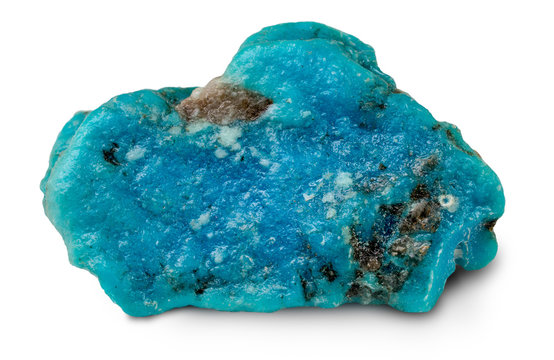
Since the history of Turquoise goes back to pre-historic times, it’s impossible to determine when exactly it was first discovered. However, from archaeological finds and historical references we know that Turquoise has been continuously used in all manner of decorative objects and jewelry by civilizations across the globe from ancient times to the present.
We know that Turquoise has been found in mines all over the world in such locations as the Turkestan region of Central Asia (Kazakhstan, Kyrgyzstan, Tajikistan, Turkmenistan, and Uzbekistan), Afghanistan, Iran (Persia), Egypt, China, Tibet, Australia, South America, Mexico, and all over the Western United States.
Many important veins of Turquoise have been found as a result of mining for copper. And new veins and new types of Turquoise continue to be discovered in mines around the world.
Over thousands of years and among various cultures, Turquoise has been attributed with almost magical abilities. It’s been believed to bring good fortune and wealth, prevent warriors from falling off their horses, improve the accuracy of weaponry, and to protect against evil.
Buyer Beware of Imitation Turquoise
Turquoise is one of the most imitated stones on the market. Since imitation Turquoise can be found in rock shops, jewelry stores, and all over the internet, a buyer must practice due diligence to determine if they are purchasing authentic Turquoise.
Altering other stones to imitate Turquoise is not to be confused with wax or epoxy treatments applied to raw natural Turquoise to stabilize it to prevent its crumbling with cutting and polishing.
These stabilizing treatments made to natural Turquoise are common in the creation of cabochons and beads for jewelry. Additionally, natural Turquoise pieces may be dyed to have an overall uniform color.
Much imitation Turquoise is created by dying cheaper and more easily obtained porous whitish stones (Howlite and Magnesite) to look like Turquoise. Dyed Howlite and Magnesite imitation Turquoise are referred to as Turquenite and are sometimes difficult to determine as fakes.
Howlite – is a white stone with grey veining that has been commonly dyed a turquoise color and passed off as natural Turquoise. Many bead and jewelry dealers have Howlite imitation Turquoise in their shop, either knowingly or unknowingly.
Magnesite – is another stone that has been altered and passed off as natural Turquoise. Like Howlite, Magnesite is a white stone, but with yellow-brown veining.
Plastic/Resin/Epoxy Turquoise – are imitation Turquoise pieces 100% man-made in a mold with added turquoise color. However, these fakes are easier to spot than the Howlite and Magnesite fakes because they will feel lighter in the hand than a natural stone and their veining will be only surface deep.
Reconstituted Turquoise – is a resin matrix of tiny ground up pieces of natural Turquoise to look like a solid piece of Turquoise.
Healing Effects of Turquoise on the Mind-Body-Spirit
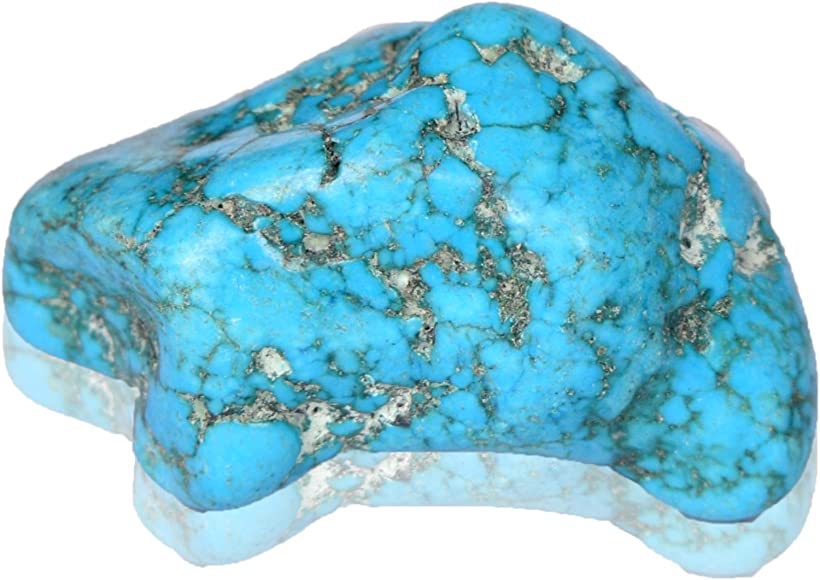
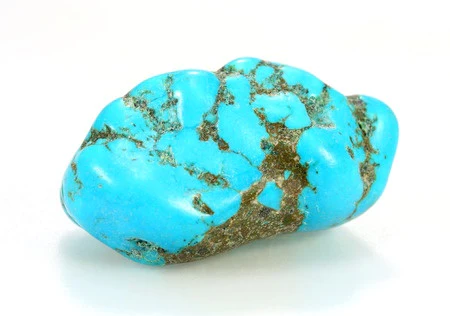
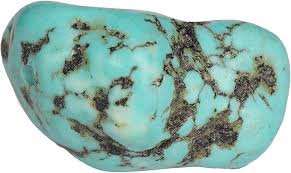
Mental/Emotional Effects of Turquoise: Due to its stimulating effect on the Throat Chakra, Turquoise aids in communication. It aids in overcoming the shyness and lack of confidence that would hamper one in expressing their wants and needs or to defend themselves against unfair treatment.
Physical Effects of Turquoise: Turquoise revitalizes the body’s energy by oxygenating the blood and aiding in the absorption of iron.
Since Turquoise has a stimulating effect on the Throat Chakra, it may aid with overcoming physical speech impediments, as well as throat, tooth, and thyroid gland issues.
Additionally, due to its copper component, Turquoise has a beneficial effect on inflammatory rheumatic conditions.
Spiritual Effects of Turquoise: Turquoise aids in recognizing authentic wisdom and the truth in everyday situations.
We all have the same purpose of serving others with our unique gifts and talents, and to do so we must communicate our gifts to others. In order to get our “spiritual work” out into the world, we must be able to promote ourselves, or our “music will die within us” when the time comes that we leave our physical body.
Using Turquoise
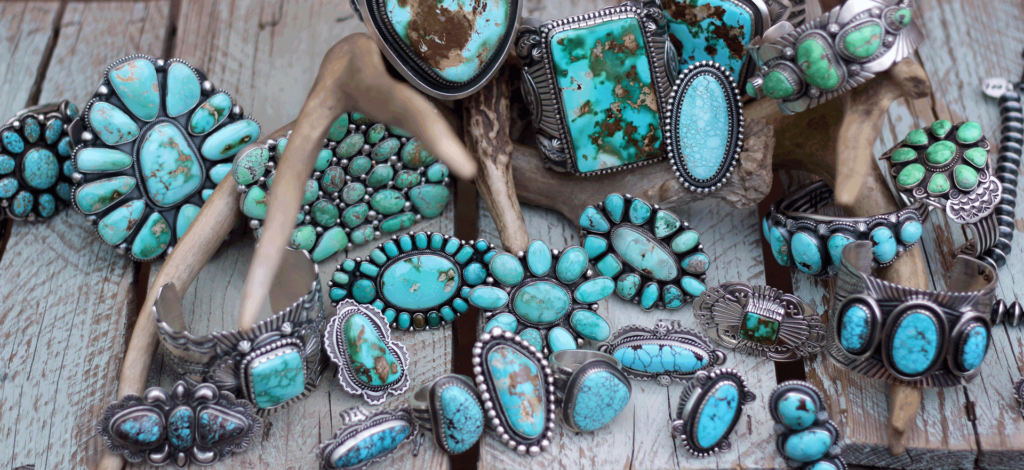
Jewelry – Turquoise is especially beautiful when paired with indigo Lapis Lazuli, red Coral, and/or orange spiny oyster shell in chunky silver jewelry pieces. These combinations are common in the American Indian and Tibetan Turquoise jewelry trade.
Meditation – Due to its effect on the Throat Chakra, when used during meditation Turquoise can enhance our ability to receive important verbal messages (Clairaudience) in our head as though someone is whispering in our ear.
Dreamwork – Turquoise laid under our pillow when sleeping helps us discern the subtle truths that are being played out in our dreams.
Healing – Turquoise laid or worn on the Throat Chakra is helpful in healing various physical, mental, and emotional issues that are associated with the Throat Chakra, as listed above.
Decor – Turquoise carved, or inlaid objects make for a quite beautiful decorative display around our home or upon an altar.
Summing Up
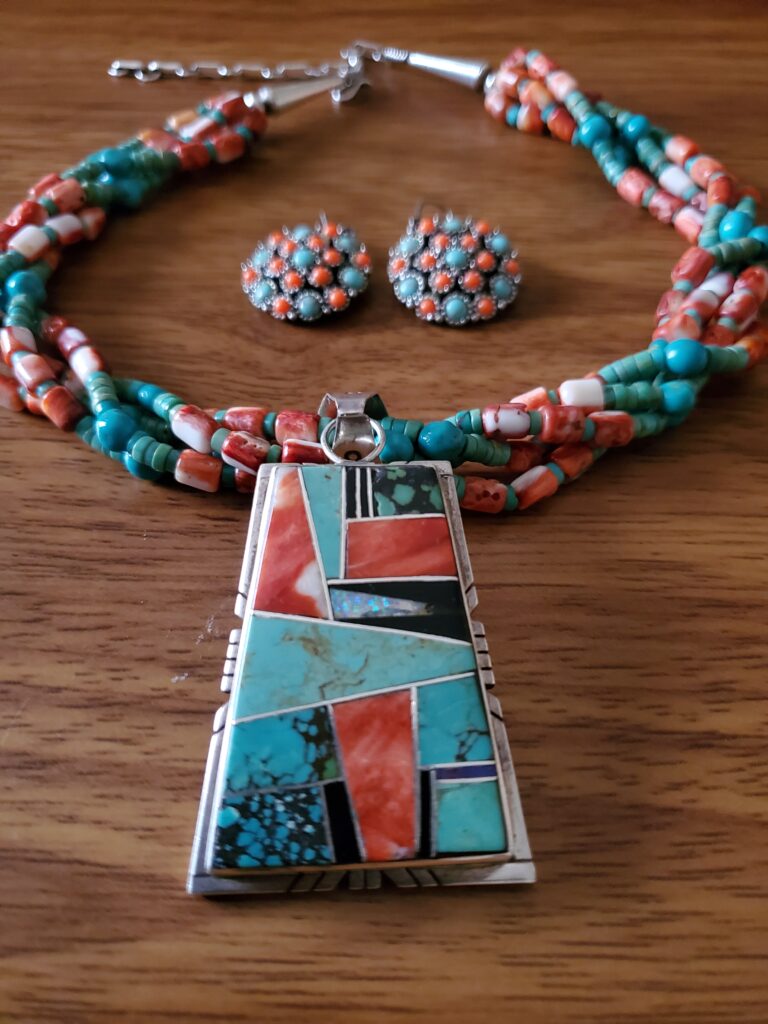
Turquoise is one of my favorite crystals due to turquoise being one of my favorite colors. Its blue-green color is by far the strongest reason for Turquoise’s lasting popularity through the ages.
I hope you will consider adding a beautiful Turquoise specimen to your crystal or jewelry collection. I know you will cherish it!
FYI: If you are interested in becoming a certified Crystal Therapist see my Crystal Therapist Certification Home Study Course on my energy healing school website Reiki Essence Institute.
Turquoise is one of my favorite colors too!!! I learned a lot!!!
Thanks for reading Kori.
I know you will treasure your Turquoise pieces acquired on your travels as I do mine. Thank you so much for reading and for commenting!
Wonderful information. Love your blog.
Thank you for reading and for commenting Diyar!